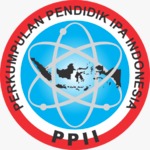Comparison of Algorithms K-Means and DBSCAN for Clustering Student Cognitive Learning Outcomes in Physics Subject
DOI:
https://doi.org/10.29408/kpj.v7i2.18428Keywords:
K-Means Algorithms, DBSCAN Algorithms, Physics Subjects, Cognitive Learning OutcomesAbstract
Clustering is an activity of grouping data into the same group based on similarity. The purpose of the study is to cluster and determine student cognitive learning outcomes characteristics. Cluster analysis was conducted on student cognitive learning outcomes using algorithms K-Means and DBSCAN. Both algorithms are appropriate to have been applied to the overlapping data such as student learning outcomes data. Also, their advantages are scaling large datasets and outliers. The data used in this study is student cognitive learning outcomes - final and mid-term exams grade X in physics subject. Applying the two proposed algorithms K-Means and DBSCAN, the best cluster algorithm to have been used for clustering analysis is K-Means which is based on the highest silhouette score of 0.43, while the silhouette score of DBSCAN is 0.39 respectively. Using the best cluster, the K-Means algorithm, found two types of clusters – cluster 1 consists of 132 students who have a high average score, and cluster 2 shows 183 students who have a low average score in both final and mid-term exams respectively. From the analysis results, most students still have low cognitive learning outcomes in physics subject.References
Adha, R., Nurhaliza, N., Soleha, U., & Mustakim. (2021). Perbandingan Algoritma DBSCAN dan K-Means Clustering untuk Pengelompokan Kasus Covid-19 di Dunia. Jurnal Sains Teknologi Dan Industri, 18(2), 206–211.
Ashari, S. bena, Otniel, S. C., & Rianto. (2019). PERBANDINGAN KINERJA K-MEANS DENGAN DBSCAN UNTUK METODE CLUSTERING DATA PENJUALAN ONLINE RETAIL. Jurnal Siliwangi, 5(2), 64–67.
Budiman, S., Safitri, D., & Ispriyanti, D. (2016). Perbandingan Metode K-Means Dan Metode Dbscan Pada Pengelompokan Rumah Kost Mahasiswa Di Kelurahan Tembalang Semarang. Jurnal Gaussian, 5(4), 757–762.
Kertanah, Rahadi, I., Novianti, B. A. ryan., Syahidi, K., Putra, H. M., Gazali, M., Hirzi, R. H., & Sabar. (2022). Applying K-Means Algorithm for Clustering Analysis Earthquakes Data in West Nusa Tenggara Province. Indonesian Physical Review, 5(3), 197–207. https://doi.org/https://doi.org/10.29303/ip r.v5i3.148
Madhulatha, T. S. (2012). AN OVERVIEW ON CLUSTERING METHODS. IOSR Journal of Engineering, 2(4), 719–725. https://doi.org/https://doi.org/10.48550/arXiv.1205.1117
Mardi, Y. (2016). Data Mining : Klasifikasi Menggunakan Algoritma C4 . 5. Jurnal Edik Informatika, 2, 213–219. https://doi.org/https://doi.org/10.22202/ei.2016.v2i2.1465
Nisrina, S., Nurmayanti, W. P., Basirun, Kertanah, & Ghazali, M. (2022). Penerapan Metode Clustering SOM dan DBSCAN dalam Mengelompokkan Unmet Need Keluarga Berencana di Nusa Tenggara Barat Universitas Hamzanwadi. J Statistika, 15(2), 237–244. https://doi.org/https//doi.org/10.36456/jstat.vol15.no2.a5549
Qadrini, L. (2020). Metode K-Means dan DBSCAN pada Pengelompokan Data Dasar Kompetensi Laboratorium ITS Tahun 2017. J Statistika, 13(2), 5–11.
Sapiruddin, Novianti, B. A., & Kertanah. (2021). EDUKASI DAN PENDAMPINGAN PRAKTIKUM FISIKA PADA SISWA SEKOLAH MENENGAH ATAS NEGERI 1 SURALAGA KECAMATAN SURALAGA. SELAPARANG: Jurnal Pengabdian Masyarakat Berkemajuan, 5, 738–742. https://doi.org/https://doi.org/10.31764/jpmb.v5i1.6286
Swamynathan, M. (2017). Mastering Machine Learning with Python in Six Steps (p.201). Apress.









